Modern smart service schedules list replacement of the coolant every three years. This is to ensure that the anti-corosion and anti-freeze properties remain effective. The petrol engines take 4.2 litres of pre-mixed coolant with the diesels taking 4.5 litres.
Unlike for the engine oil, smart have very kindly provided a drain-off point for the coolant. You can find this just above the oil filter on the engine block. Ensure that the car is parked level.
Warning: The anti-freeze in coolant is highly toxic for animals who are attracted to its sweet smell. Try to contain the coolant mixture as much as possible - we find that an old washing up bowl is most effective. Ensure that any spilt coolant is hosed away - do not leave it exposed overnight.
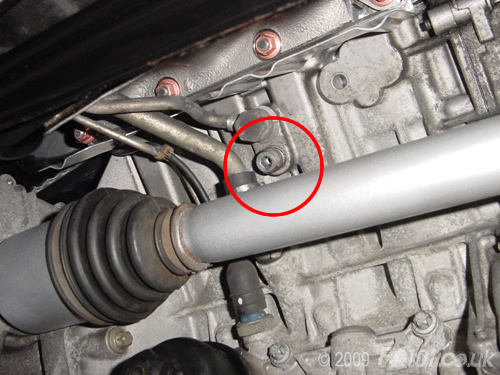
Use a 6mm hex key to loosen the drain-off point - ensure your bowl is underneath.
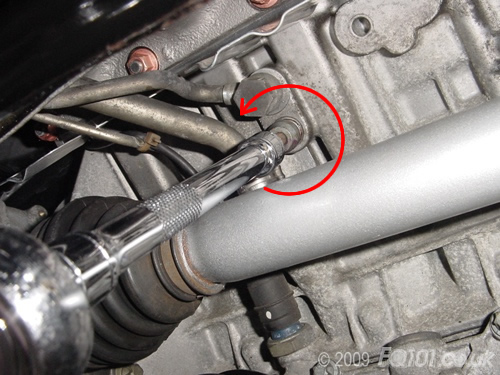
Coolant will start to gently run out of the engine an all over the drive shafts. Don't worry, it won't do them any harm, just clean them up afterwards. If you have help, your assistant can try and hold a short piece of guttering to 'channel' the coolant into the bowl.
As air needs to replace the coolant in the system, open the right service access hatch (as you face the car) pull out the internal air duct and undo the coolant reservoir cap. In this case, the front of the car has been removed for clarity.
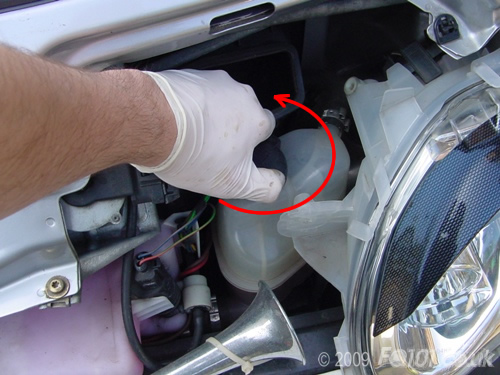
Coolant will now start to pour out of the engine.
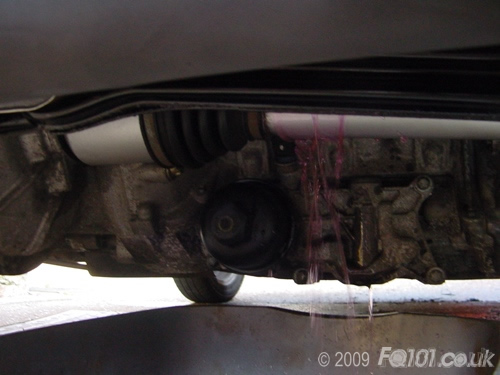
You will never drain the entire system with the car level. Therefore, jack up the nearside front to try and force more coolant to the back.
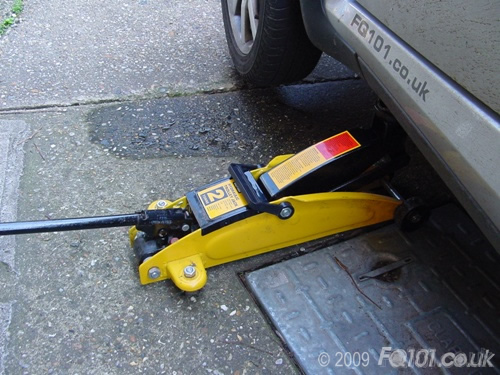
This method will drain most of the system. However, there is still a small quantity of coolant sitting in the engine and turbo. In order to drain this, you need to open another high point, the thermostat. Depending on your patience, you may choose to skip this step, but it will save problems later if you do.
The thermostat is located as indicated below:
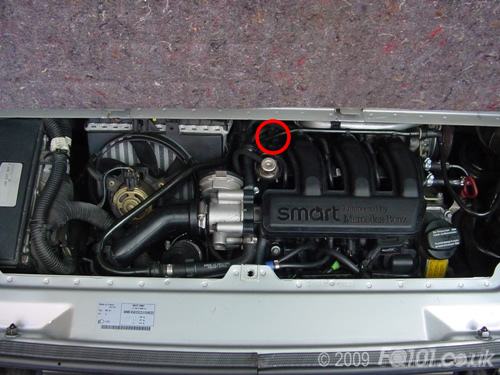
You need to remove the temperature sender from the thermostat. This is held in place with a U-shaped spring clip that can be very lively, so take care!
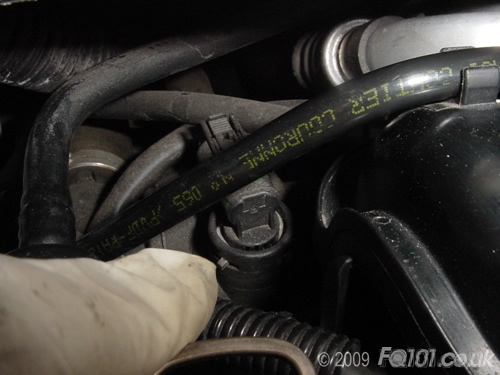
Remove the cable connection. Due to space constraints, it is easier to press down the release tab with a flat blade screwdriver and push the connector off with your other hand.
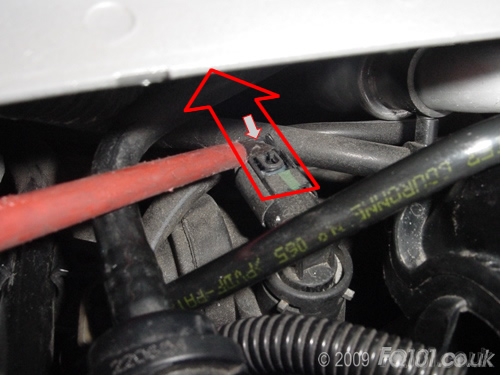
Hold the back of the spring clip with one hand and lever it back with a large flat blade screwdriver in the direction shown. There is a loop in the centre of the spring clip which should give you some purchase. Always hold the spring as it will suddenly release and you don't want to lose it down the back of the engine block!
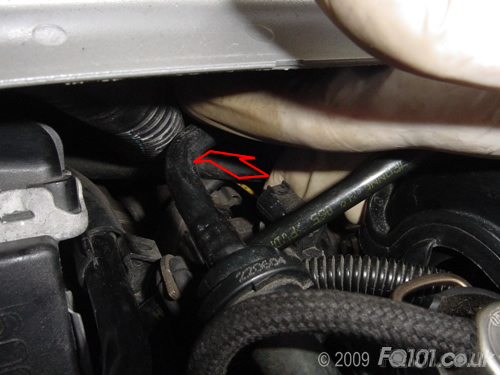
Use some long nosed pliers to remove the spring from the engine bay.
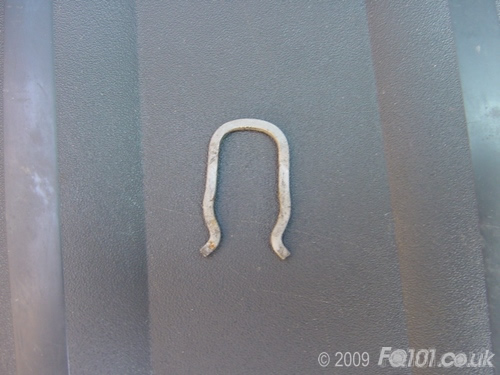
The temperature sender just pulls out. As it does, you will hear some more coolant run into the bowl.
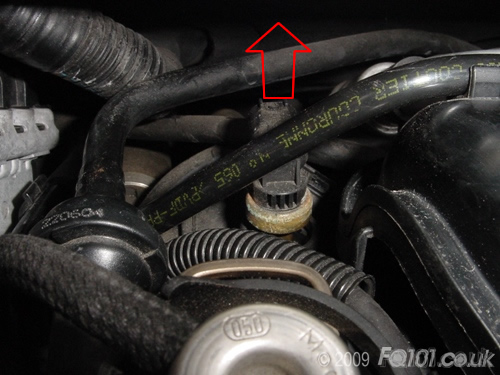
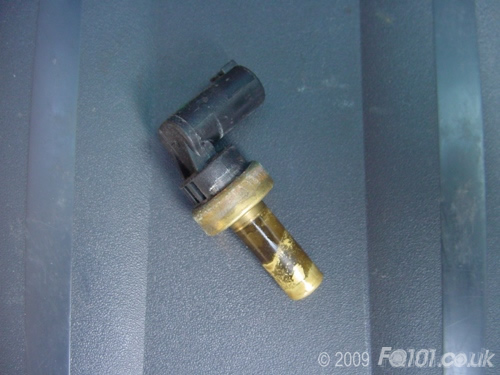
Allow the system to fully drain. Try jacking up the front of the car a bit more to free some stubborn coolant from the radiator.
When you are happy, lower the front of the car. Refit the drain-off plug but only finger tight.
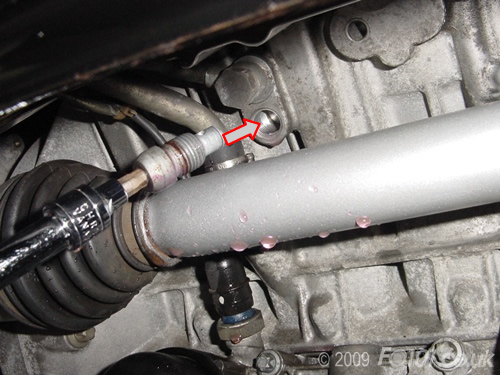
Push the thermostat temperature sender back in place, but don't refit the spring.
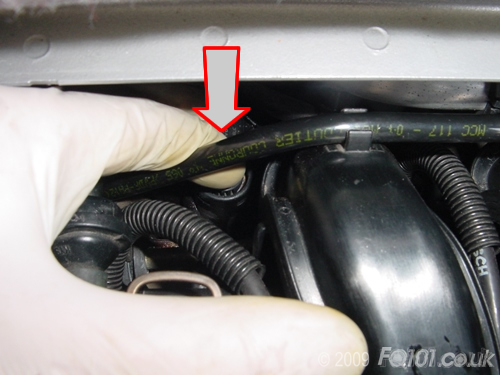
Pour new coolant into the reservoir. Allow it to settle before topping up to the MAX line. Don't worry if you go slightly over.
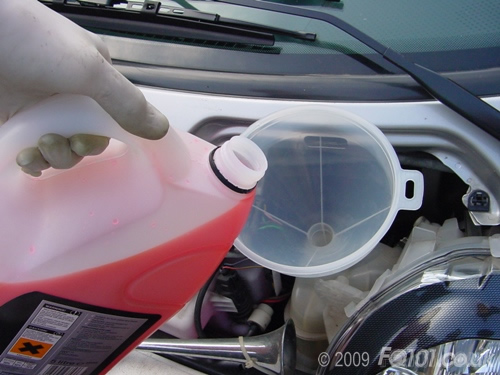
As the drain-off point is the lowest point for an air lock, carefully loosen the plug. You will hear some hissing before coolant starts to bleed out.
Now, fully tighten the plug.
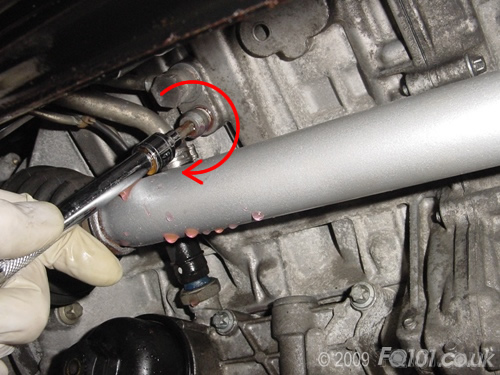
If the level of the reservoir has gone down significantly, top up to MAX.
Now to bleed the engine. Hold the thermostat temperature sender between two fingers as shown:
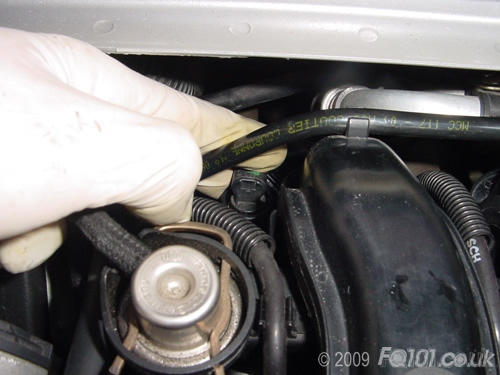
Carefully wiggle the temperature sender upwards - do not remove it fully otherwise you will have coolant everywhere. You will hear hissing of air before coolant starts to bleed through. At this point, push the sender back into place.
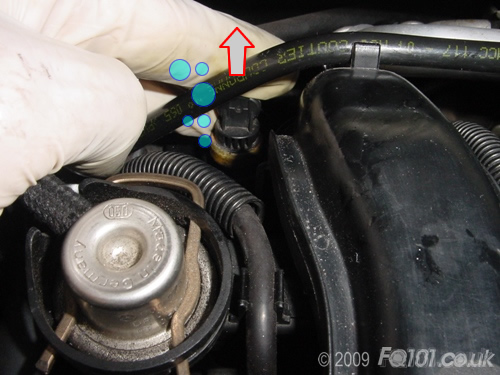
Refit the spring clip. This is harder than it sounds as it can ping back into the engine bay. We suggest rotating the themostat through 90 degrees so that the connection point doesn't point to the front of the car. With one hand, carefully position the clip ready to go on. With the other hand push the clip centrally. You may find that wearing a tough gardening glove will be kinder on your fingers! The clip will ping back into place.
If you do lose the clip, you can order another one from smart under the following part number: Q0002999V001000000
Reconnect the wiring and clean up any spilt coolant from the engine bay and the driveshafts.
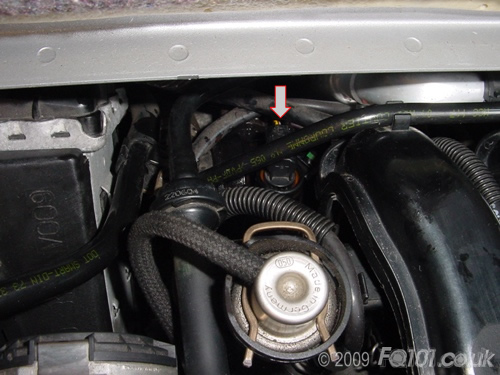
Dispose of old coolant correctly and immediately.
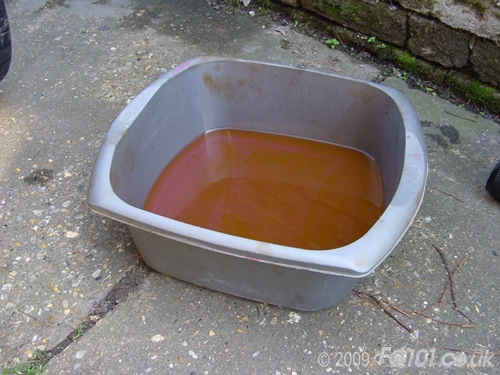
Top up the reservoir to MAX before tightening the filler cap.

Note: If you didn't fancy removing the thermostat temperature sender, you need to force out the air lock in the engine. To do this, remove the reservoir filler cap and ensure the level is on MAX. Jack up the nearside front as high as it will go. Note the new level of the coolant in the reservoir. Start the car and turn on the interior fan heater. The heating comes from the return hot water from the engine. If there is an airlock, the heating will not blow warm air. Keep an eye on the temperature blobs. When the third one illuminates, the thermostat will open and could drain your reservoir depending on the severity of the air lock. Keep topping the level up to the noted mark. Your heaters should now blow warm air and the airlock will be shifted.
If this doesn't clear it, take the car for a spirited drive. On returning, very carefully release the filler cap and allow the steam to escape. This is dangerous so be careful! However, it should free any air from the system.






